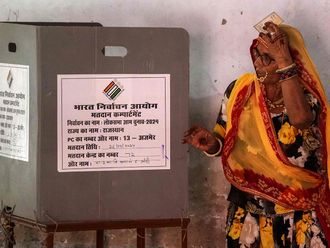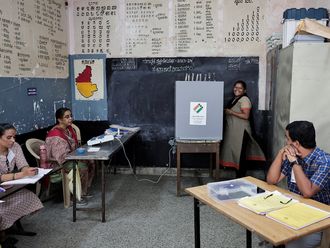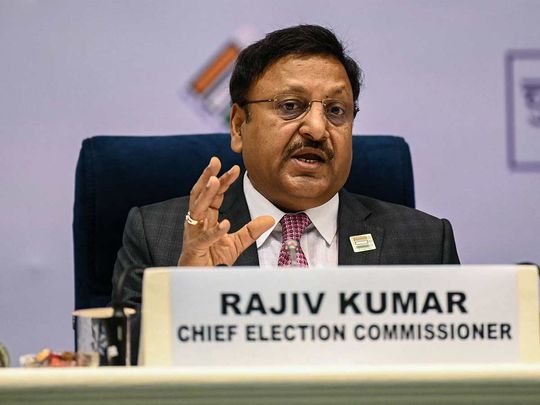
New Delhi: India will begin voting in phases starting April 19 to elect a new parliament, the country's election authority said on Saturday.
Nearly a billion people are eligible to cast ballots in what will be the largest exercise of the democratic franchise in human history, conducted over six weeks.
Many consider Modi's re-election a foregone conclusion, owing to both the premier's robust popularity a decade after taking office and a glaringly uneven playing field.
His opponents have been hamstrung by infighting and what critics say are politically motivated legal investigations aimed at hobbling any challengers to the ruling Bharatiya Janata Party (BJP).
In the largest exercise of the democratic franchise in human history, 970 million people are eligible to vote — more than the entire population of the United States, European Union, and Russia combined.
"We will take democracy to every corner of the country," chief election commissioner Rajiv Kumar said at a press conference in New Delhi announcing the voting dates.
"It is our promise to deliver a national election in a manner that we... remain a beacon for democracy around the world."
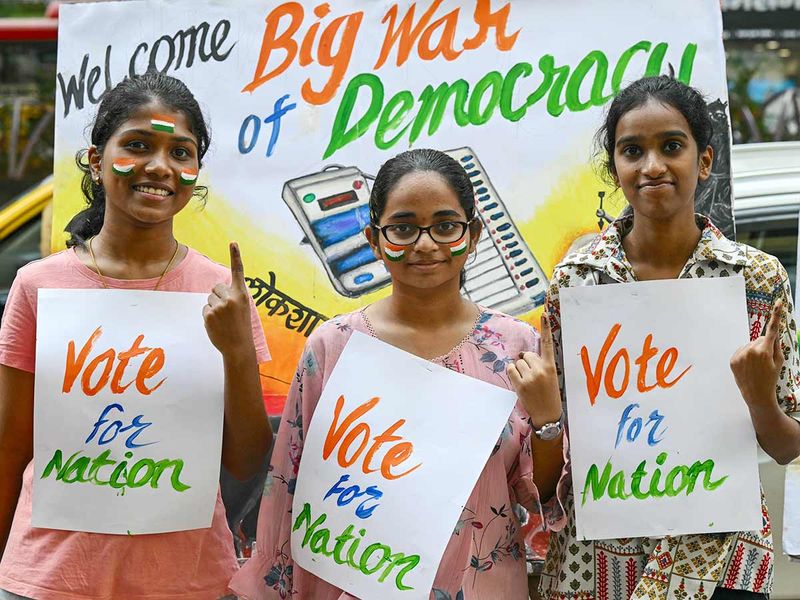
Voting will be staggered over seven stages, with the first date of polling on April 19 and the final phase on June 1.
Results around the country will be counted all at once on June 4 and are usually announced on the same day.
The elections for 543 seats in Lok Sabha will run through June 4, a mammoth exercise spanning the country's varied terrain. More than 2,400 political parties are expected to field candidates.
Phase 2 elections will be held from April 26, last date of nominations for candidates in April 4.Second phase will cover 12 States and Union Territories.
Phase 3 elections will be held on May 7, last date for nominations for candidates is April 19. The third phase will cover 12 States and Union Territories.
Phase 4 elections will be held on May 13, last date for nominations for candidates is April 25.Fourth phase will cover 10 States and Union Territories.
Phase 5 elections will be held on May 20, last date for nominations for candidates in May 3. The fifth phase will cover 8 States and Union Territories.
Phase 6 elections will be held on May 25, the last date for nominations for candidates is May 6. The sixth phase will cover 7 States and Union territories.
Phase 7 elections will be held on June 1, last date for nominations for candidates is May 14. The seventh phase will cover 8 States and Union Territories.
543 CONSTITUENCIES
Phase 1 elections will be held in 102 constituencies, a total of 89 constituencies will undergo in phase 2.
In Phase 3, polling will be held in 94 constituencies.
96 constituencies will undergo polling in Phase 4, and 49 constituencies will undergo polling in Phase 5.
In Phase 6, polls will be held in 57 constituencies and also in Phase 7, 57 constituencies will undergo for polls.
ASSEMBLY POLLS
The assembly elections in Andhra Pradesh and Odisha will be held on May 13. while the Assembly polls in Arunachal Pradesh and Sikkim on April 19.
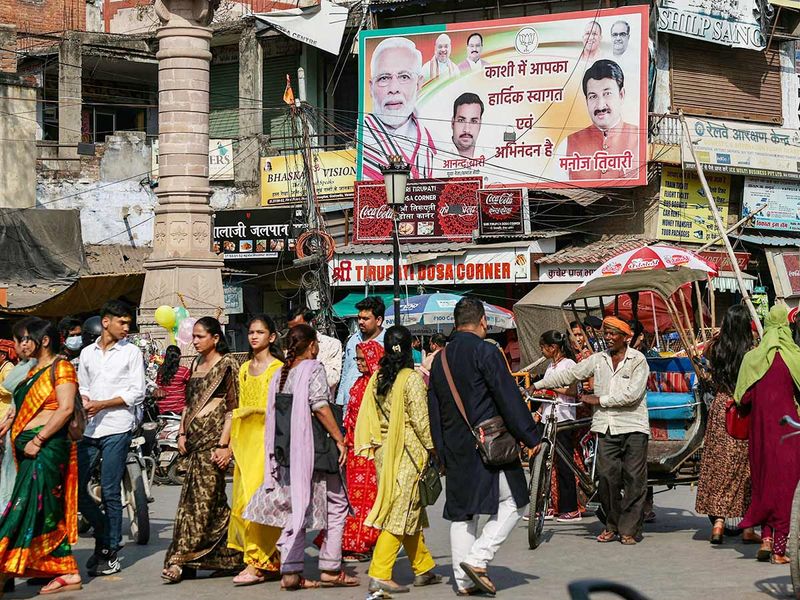
Modi seeks a repeat of his landslide wins
Modi, 73, has already begun unofficial campaigning as he seeks a repeat of his landslide wins of 2014 and 2019, forged in part by his muscular appeals to India's majority faith.
In January, Modi presided over the inauguration of a grand temple to the deity Ram in the once-sleepy town of Ayodhya, built on the grounds of a centuries-old mosque razed by Hindu zealots.
Construction of the temple fulfilled a long-standing demand of Hindutwa activists and was widely celebrated across India with back-to-back television coverage and street parties.
The election commission will rope in around 15 million government employees, including teachers and junior workers, to help conduct the election. And the election spending is expected to exceed $14.2b for this year's contest.
Published opinion polls are rare in India but a Pew survey last year found Modi was viewed favourably by nearly 80 percent of Indians.
"Wherever I go, I can clearly see that Modi will become PM for the third time," Amit Shah, India's home minister and Modi's closest political ally, said in a speech this week.
A total of 970 million people are eligible to vote in the election - more than the entire population of the United States, European Union and Russia combined.
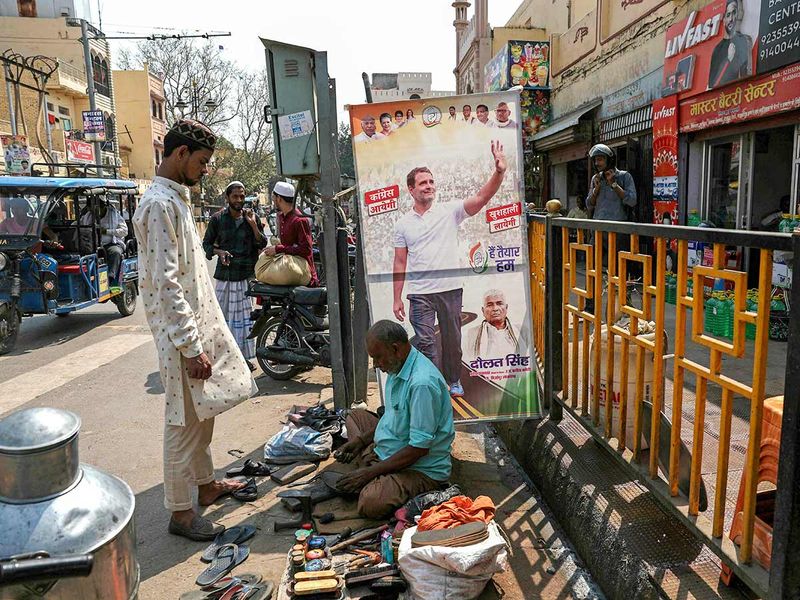
Here are a some facts about India's general elections, the world's largest democratic exercise.
NUMBERS
Almost 970 million Indians are registered to vote at over a million polling stations across the country. India's election commission will rope in nearly 15 million government employees, many of them teachers and junior workers, to help conduct the election.
The election will be held in seven phases, with votes to be counted and results expected on June 4 and the entire election process completed by June 6.
PARTIES
Modi's Hindu-nationalist Bharatiya Janata Party (BJP), the dominant political group, is widely expected to win more than the required 272 seats needed for a simple majority.
Modi predicts the BJP will win 370 seats and its National Democratic Alliance more than 400, aiming for a four-decade high.
His main opposition, the Congress party, which has ruled India for much of its time since independence in 1947, formed a 28-party alliance called INDIA (Indian National Developmental Inclusive Alliance) to jointly fight the BJP. It has been riven by differences over giving up seats to field common candidates.
PROCESS
India uses electronic voting machines, introduced in 1982, and 5.5 million such machines will be used in this election.
Electors cast their votes by pressing a button next to a candidate's name and party symbol.
Election Commission of India guidelines say every voter should be within 2 km (1.2 miles) of a polling station, so polling officials often must trek for days or climb hills to reach remote locations in hilly areas. In one case, that means travelling through a jungle in the western state of Gujarat so a lone voter could cast his vote in a polling booth.
THE COST
Election spending has grown rapidly in tandem with India's booming economy, now the fifth-largest in the world after overtaking former colonial master Britain in 2022.
An estimated $8.7 billion was spent by organisers, political parties and candidates in 2019, according to a report by the Centre for Media Studies (CMS).
Around a quarter of that figure was cash payments made directly to voters by candidates in an attempt to sway their decision, the report said.
The same think-tank told Indian media in February that it forecast election spending to exceed $14.2 billion for this year's contest.
That figure is almost on par with political spending during the 2020 congressional and presidential elections in the United States.



